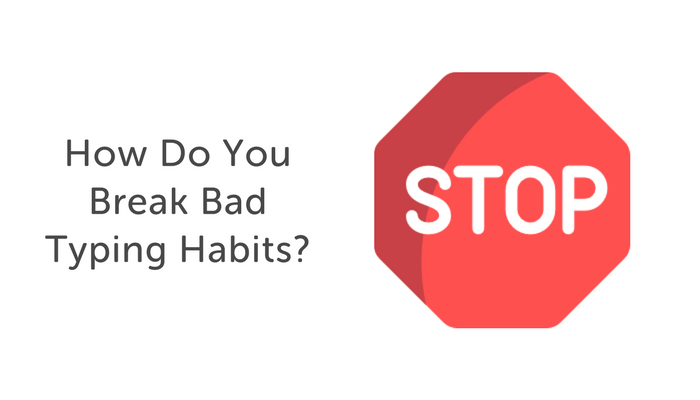How Do You Break Bad Typing Habits?
Bad habits happen.
When it comes to typing, it almost feels like bad habits are inevitable.
By the time students get proper typing instruction in middle school, they’ve already spent their formative years pecking out messages to friends on an array of devices.
So how can typing teachers engage kids in the grueling task of breaking their bad habits in order to master touch typing?
There is certainly no silver bullet to solve this problem, but keep reading for a few ideas on how to get started.
Focus on Form
Make a big deal to students about the importance of correct form and technique when typing.
Even if it feels like you’re beating a dead horse, take the time at the beginning of the year to teach, review, and reiterate the importance of posture, hand position, and looking at the screen while typing.
Celebrate students who do this well, and incentivize others to follow their lead.
The easiest way to show form matters? Grade it!
Make posture and technique a part of students’ grades. These could be worth anywhere from 10% to 40% of a student’s grade depending on how much you think kids need an extra push to work on form.
Use a simple rubric or checklist to grade students on their form during typing time.
In addition to checking posture and hand position, it’s also worthwhile to include having both feet flat on the floor and eyes on the screen as requirements for perfection.
Use Tools
There are a handful of tools and resources that nudge students to drop bad habits and adopt touch typing.
Keyboard skins can be used to cover the keys while students are typing.
If students cannot visually see which letter is on which key, they’ll need to rely on the keyboard on their screen and their ability to use the correct finger to strike a given key in order to succeed.
Similar to skins, you can purchase or make keyboard covers that achieve the same purpose.
Keyboard covers are like small benches that sit above your keyboard with room for your hands underneath.
By removing the visual cues for which key is which, students will need to rely on their muscle memory to learn key placement.
Finally, Typing.com comes with built-in resources to help tackle bad habits.
Our favorite? Problem key custom lessons.
Once a student gets started on Typing.com, the software will collect typing data to identify which keys a student tends to get wrong – his or her problem keys.
From there you can assign a customized lesson to each student to work on problem keys in order to help build muscle memory for the correct key placement.
Build Typing Investment
Of all the skills that students learn in school, there is no doubt that typing is one they’ll likely need to use after they graduate.
Invest kids in the importance of learning to type well, and they’ll be more willing to do the hard work required to break bad habits.
For example, you could share with students a list of jobs that require typing skills.
Or, stress the importance of accuracy in typing by doing a mini-lesson on the most expensive typos of all time.
If you can show kids real-world examples of why good typing is important, they’re more likely to care about tackling the challenge of touch typing, regardless of what habits they currently have.
Start Them Early
While it may not be an answer that can solve your problems right now, your best bet for beating bad typing habits is to prevent them in the first place.
Students are starting to access keyboards at younger and younger ages.
If they spend the first several years of their digital lives pecking away at keys without any instruction or supervision, bad habits are likely to form.
On the other hand, if students get high-quality typing instruction at an early age, it’s much easier to circumvent bad habits altogether.
Starting kids earlier on typing instruction won’t help with the students who are in your classroom today, but will help with future generations of students.
Talk to your school or district administrator about introducing typing instruction into lower grades.
Many states and districts have had success with introducing keyboarding as early as second or third grade.
As more and more state tests are becoming computer-based, schools have good reason to want to help their students learn to type quickly and accurately.
Got any other ideas for how to break students of bad typing habits? Please share them in the comments below!

